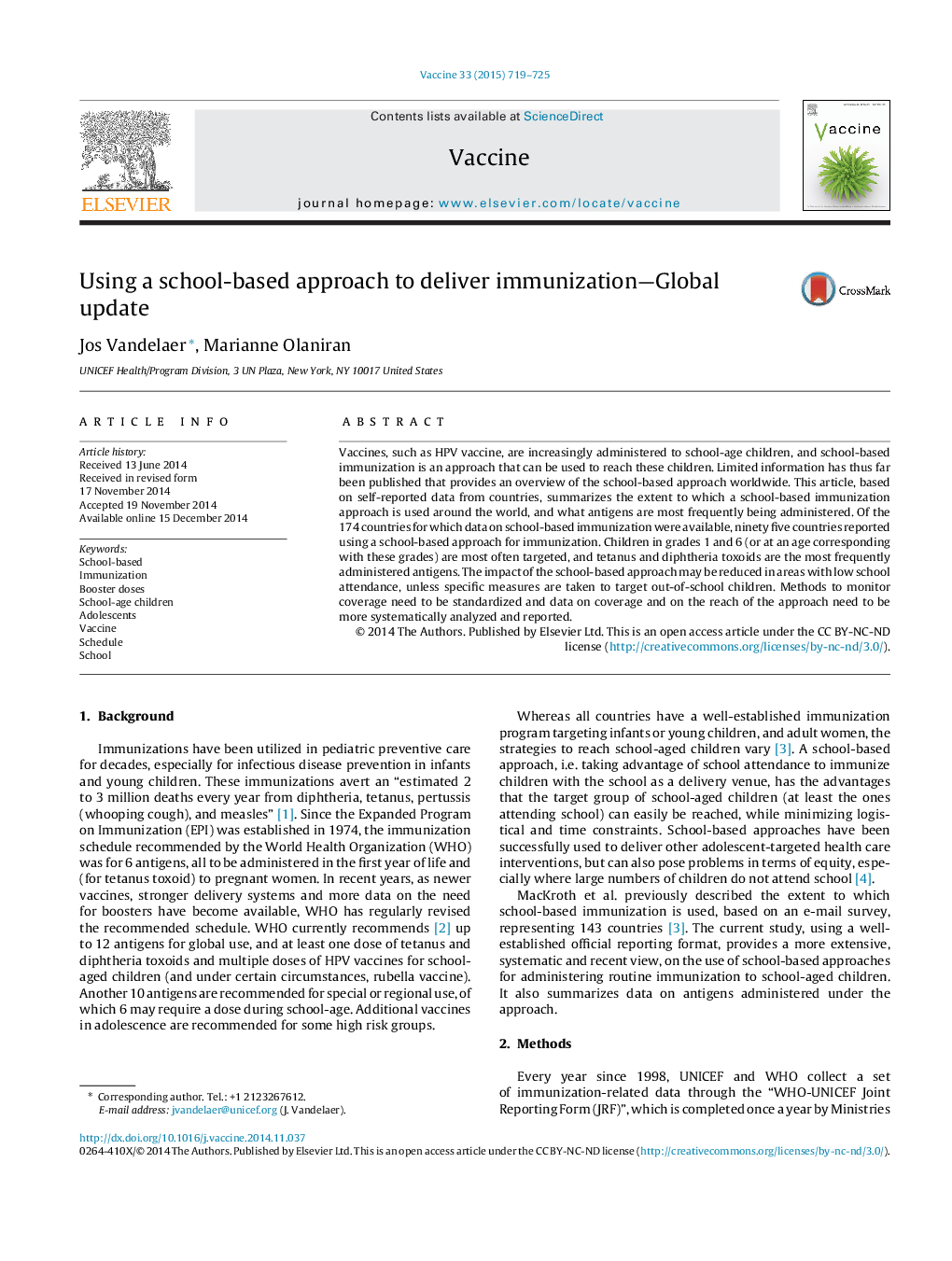| Article ID | Journal | Published Year | Pages | File Type |
|---|---|---|---|---|
| 10964869 | Vaccine | 2015 | 7 Pages |
Abstract
Vaccines, such as HPV vaccine, are increasingly administered to school-age children, and school-based immunization is an approach that can be used to reach these children. Limited information has thus far been published that provides an overview of the school-based approach worldwide. This article, based on self-reported data from countries, summarizes the extent to which a school-based immunization approach is used around the world, and what antigens are most frequently being administered. Of the 174 countries for which data on school-based immunization were available, ninety five countries reported using a school-based approach for immunization. Children in grades 1 and 6 (or at an age corresponding with these grades) are most often targeted, and tetanus and diphtheria toxoids are the most frequently administered antigens. The impact of the school-based approach may be reduced in areas with low school attendance, unless specific measures are taken to target out-of-school children. Methods to monitor coverage need to be standardized and data on coverage and on the reach of the approach need to be more systematically analyzed and reported.
Related Topics
Life Sciences
Immunology and Microbiology
Immunology
Authors
Jos Vandelaer, Marianne Olaniran,
